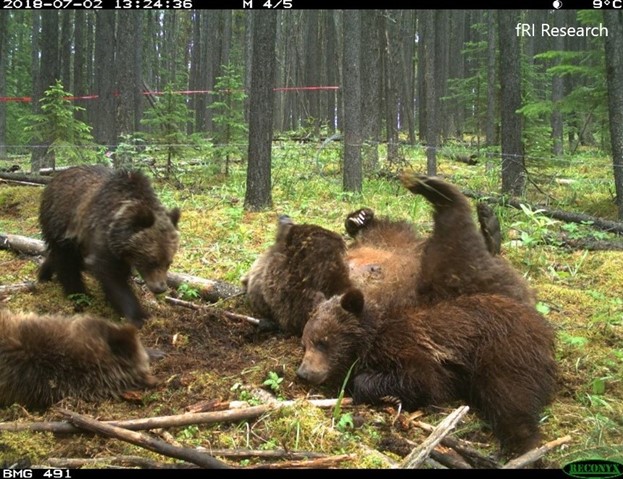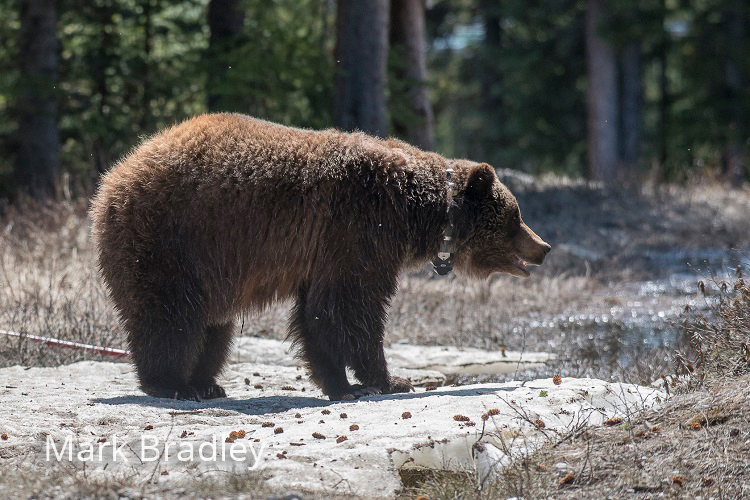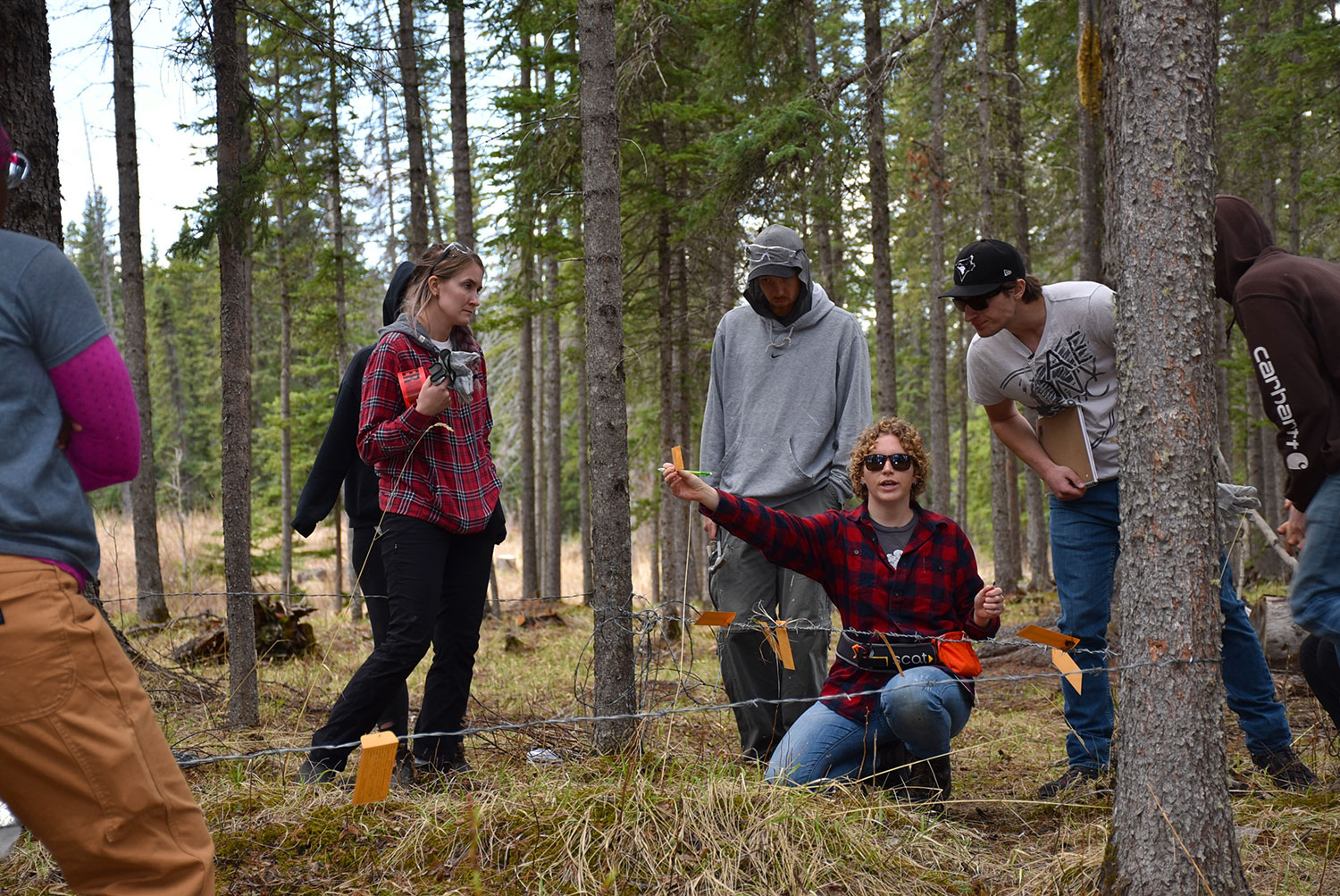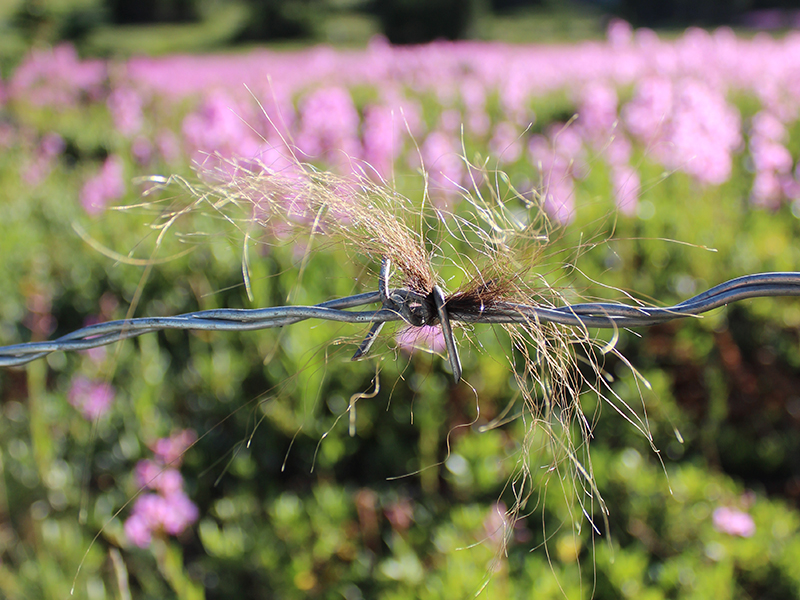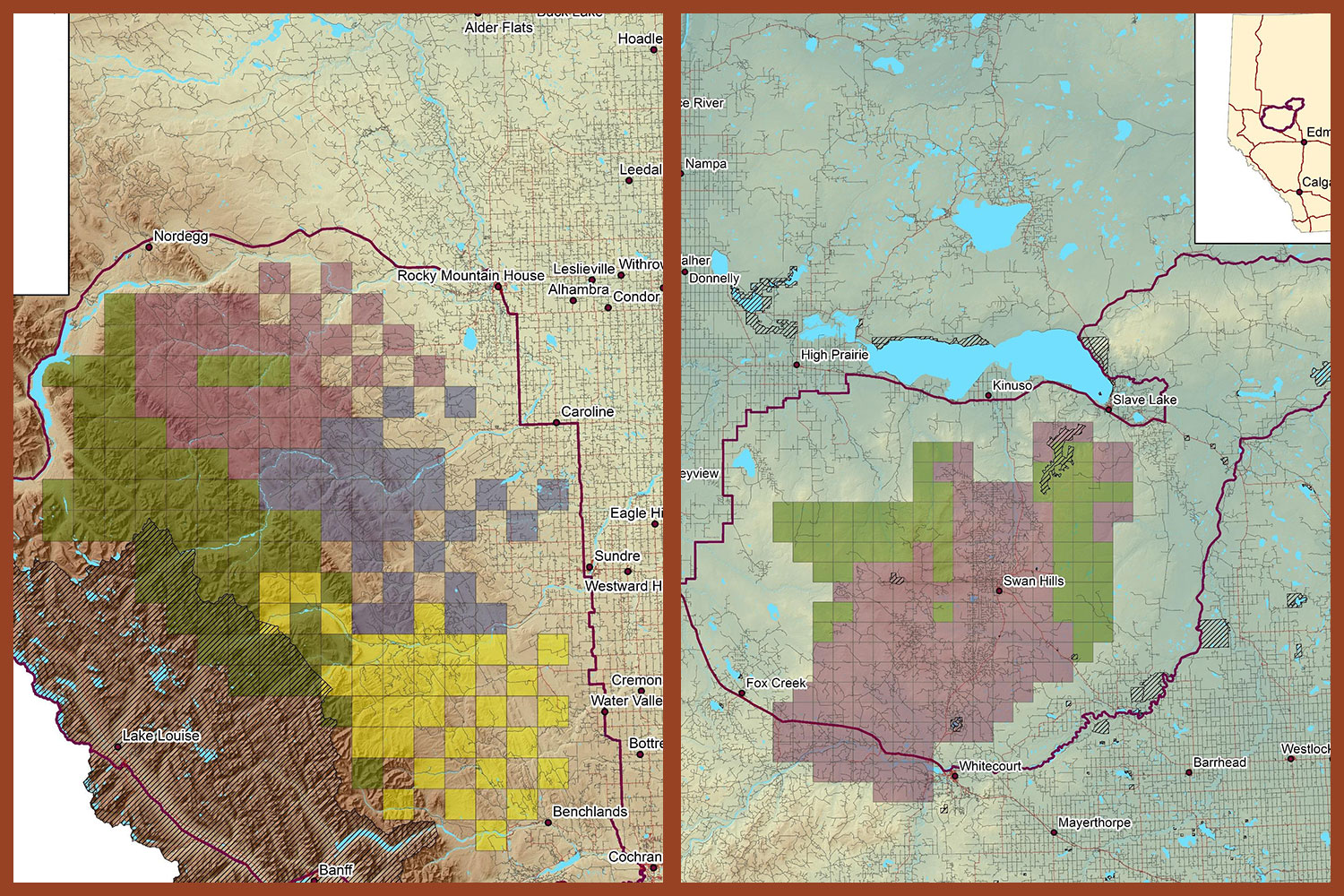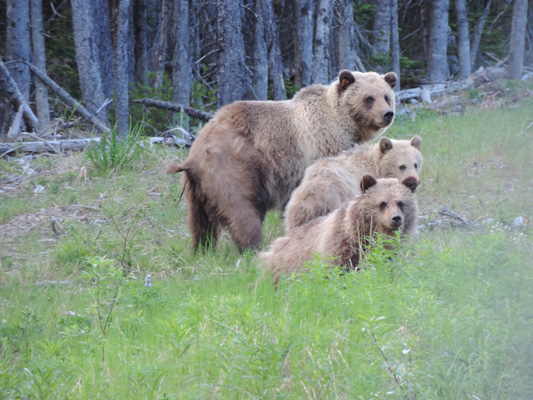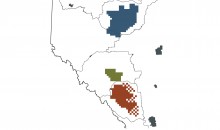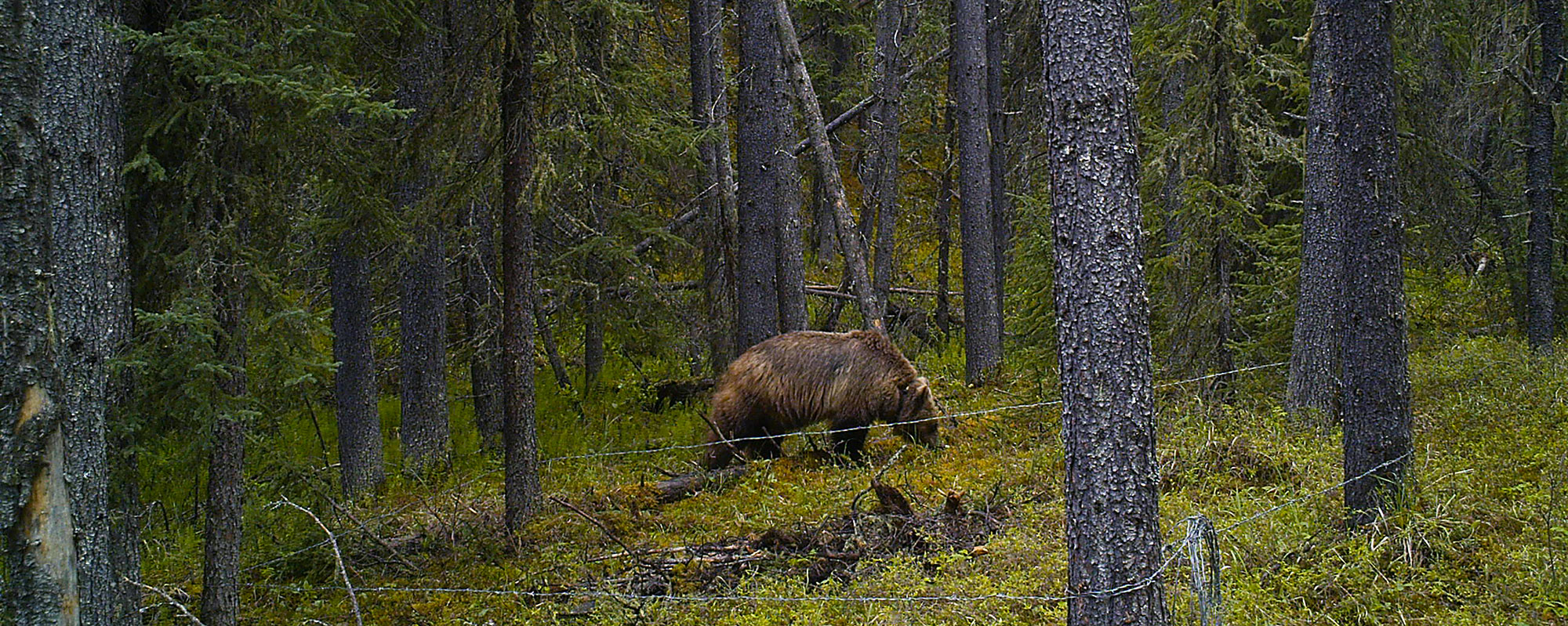
Clearwater (BMA 4) Grizzly Bear Population Inventory
This DNA mark-recapture study uses hair snags to conduct the first repeat estimate of the population of grizzly bears in BMA 4.
This area Bear Management Area was previously surveyed in 2005, which estimated a population of 45 grizzly bears. It is bordered on the north by Highway 11, on the west by Banff National Park, on the south by Highway 1, and on the east by Highway 22.
This project will use similar methods to the previous 2005 survey, so that we can compare the results to see how the population has changed.
Background
This area was surveyed in 2005. Using closed models, the estimated population of grizzly bears was 45. The data was later re-analyzed with spatially explicit models, giving an estimate of 43 bears. In either case, the estimated grizzly bear density was roughly five bears per 1,000 km2.
Since then, the BMA has been stratified into core and secondary areas, providing a way to assess populations relative to habitat and anthropogenic risks. The primary emphasis is recovery of bears within core areas—higher quality habitat with lower road densities and anthropogenic impacts. Since core habitat areas should have a higher densities of bears, it’s important to consider this stratification in the design of this project with the main emphasis on estimating the densities within core areas.
Objectives
The objectives of this inventory are to obtain an estimate of abundance and density that can be compared to the 2005 inventory estimates, and assess changes in the distribution relative to core, secondary, and overall changes in landscape within the BMA. This would include statistical comparisons of point estimates of density, as well as the distribution of bears across the BMA.
Methods
To determine how many hair snag sites there should be, and how to distribute them for good precision while still being comparable to the 2005 inventory, we simulated different sampling designs with different sized cells with different levels of sampling effort. It turned out that all designs had reasonable precision and low relative bias.
On the assumption that grizzly bear densities will be higher in core habitat than secondary, we chose a stratified design where core areas got 7×7 km cells (matching the 2005 cells to allow a direct comparison), and secondary areas got 10×10 km cells.
Similar to the 2014 BMA 3 inventory, we will set up barbed wire–enclosed hair snag sites in each cell to non-invasively collect grizzly bear hair. In May and June 2018, three ground and one helicopter team will set up and re-visit the sites to collect hair snags. In August, the hair will be cleaned, sorted, and delivered to the lab for DNA extraction and analysis. We expect to receive results by March 2019. Our full analysis will be completed in May 2019.
Planning and preparation underway
A week of safety, equipment, and of course, hair sampling training.
Crews begin setting up hair snag sites.









